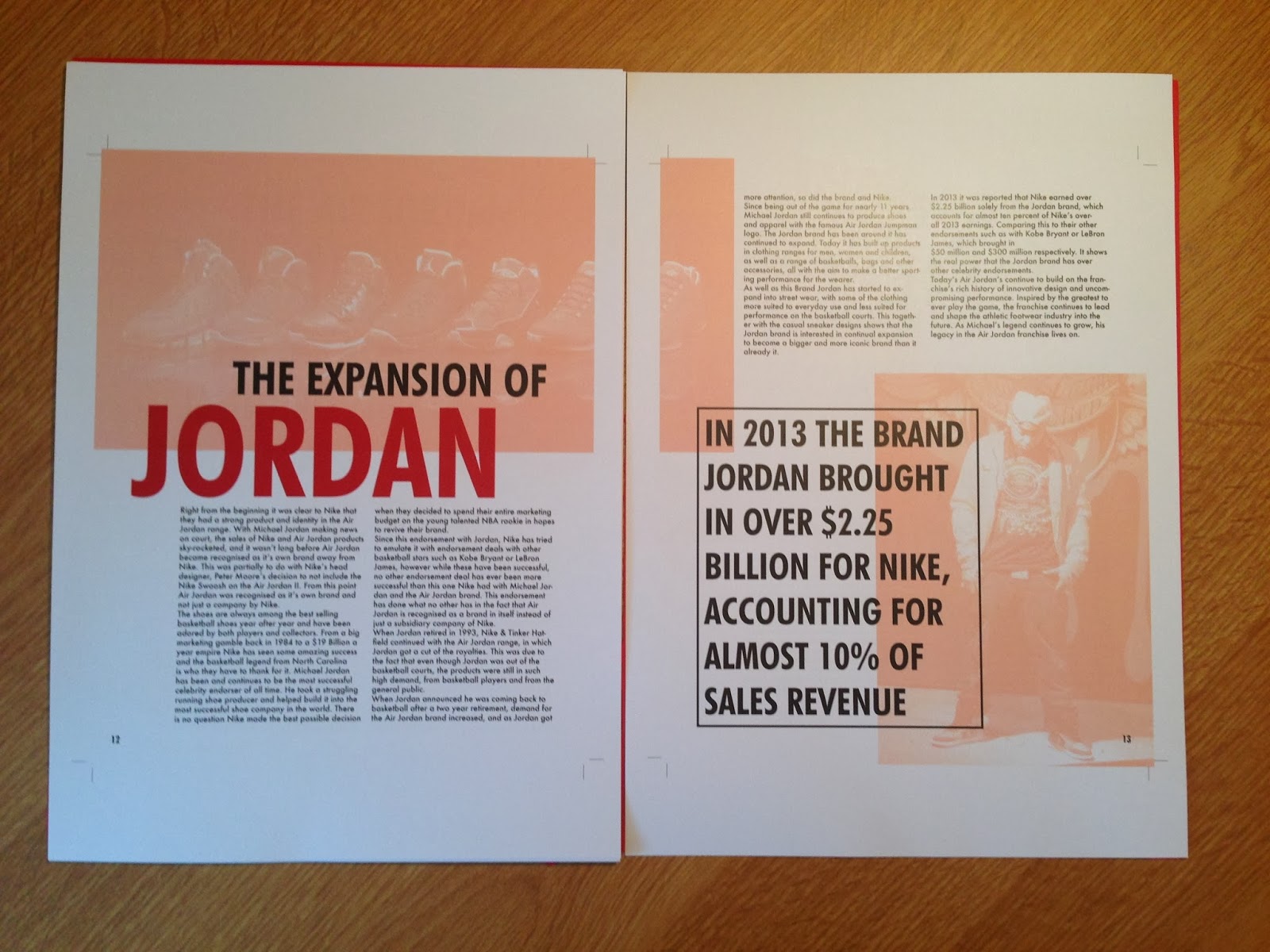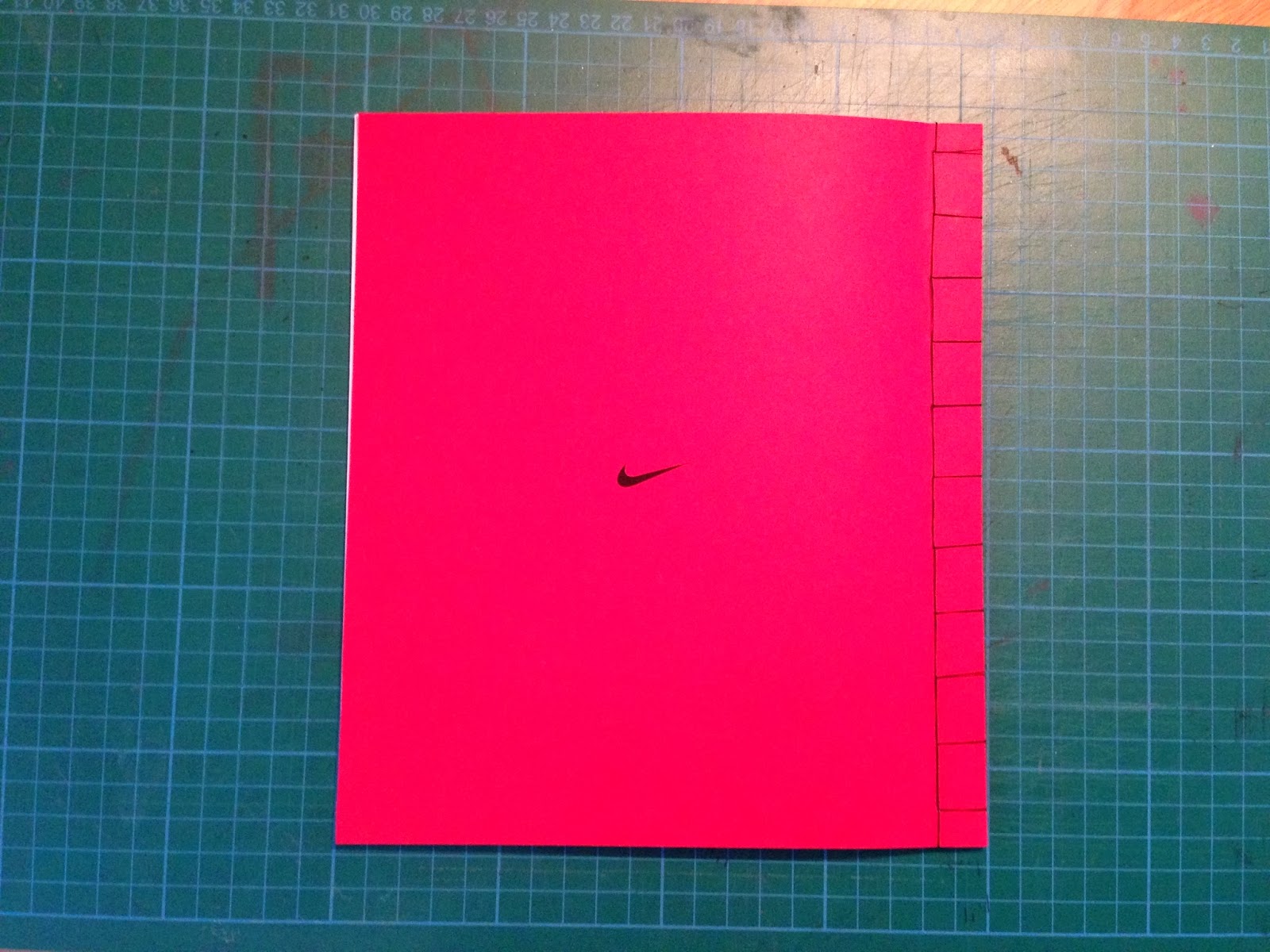In today's crit we were split into groups of around six or seven and given about an hour to talk through our publications and how far we had got in terms of content, concept and designs. This was also a chance to ask questions and get a bit of spoken feedback. The second part of this crit was one where we went round everyone's in the group and gave written feedback.
For this crit I brought along all that I had prepared for it. I had a 75% scale mock-up, bound to make it more realistic. A 50% scale mock-up with the perfect binding on it, and two packaging ideas.
I spoke through the initial research subject and what I had narrowed this down to - Air Jordan. I spoke through what research I had decided to include as well as the overall aesthetic of the book and packaging ideas.
Initial spoken feedback was positive on the amount that I had done for the crit, and it was obvious that having the mock-ups was beneficial to the group in giving constructive feedback.
The idea of combing the two packaging mock ups was the main topic. Everyone agreed that the two triangles was something not seen much and was interesting, however it was also agreed that the idea of a window to see the front of the booklet was interesting. Combining these two together is the direction the whole group thought I should take, so I will need to work on this.
They also commented on the fact that they liked the size of the 75% scale and didn't think I needed to do it at the intended size. This is exactly what I thought when I printed and bound it, but having this confirmed is helpful. On the topic of stock, everyone agreed that the stock I had actually printed on already worked really well. This was a bit of a shock considering this is my standard printing paper, and I had intended to print on something a bit thicker or matte. I will need to experiment with stock to see exactly what works well.
It was also agreed that my choice in perfect binding was a good one, and they all seemed quite impressed at the fact I had been able to perfect bind such a small number of sheets and made it look decent. In terms of written feedback, my Peer Feedback sheet was written on, as well as annotations through the 75% scale publication.
As I have just put the text in for a bit of context, the feedback concerning this isn't anything I will take on board in terms of the hyphenated words being over two lines etc. However I got some useful feedback in how to set the text out so it doesn't have such big gaps and look odd. I will definitely try these ideas out and see which works best.
There were a couple of notes about boxing around some of the larger text, but as I have previously tried this and decided against it, I am not too sure about trying it again now. I decided against it for a reason so will be trying to move forward without having to box all the text up again.
There was a note about lining up some text on the first spread with the title. I will try this, but because I have done this to the grid I designed I am not sure this is necessary as I am happy with it the way it is. There were a couple of conflicting points of feedback, so I will need to see what works best, however I do think I will go with the pieces of feedback I agree with in these cases.
There was a comment about the readability of the large text on the 'branding air jordan' spread because it goes across the two pages, however when looking at the two booklets I had mocked up, I believe the main reason behind this issue was down to the bind used. The Japanese bind was quick and isn't as precisely done as the perfect bind, and in the booklet with the perfect bind, the text is much clearer and readable.
Overall the feedback was positive and constructive, with some good points made that I hadn't initially thought of as good or bad design elements through the publication. I found that this crit was very useful and probably the most useful crit I've ever had because there was time for me to explain the idea and get some spoken feedback, but then a chance for everyone to think about it more and give written feedback where they are more concise and honest on their feelings of the publication, which gave a lot more feedback than I got spoken.
At this point I am feeling positive about the direction of the publication and feel confident that the content is all relevant and that all I need to do is develop the layouts so each page is as strong as the previous and there is a consistent aesthetic throughout.


























































